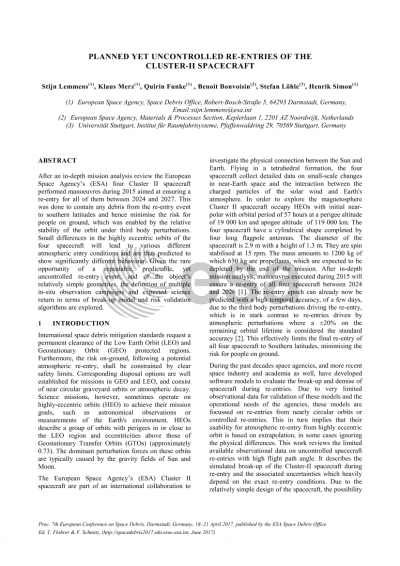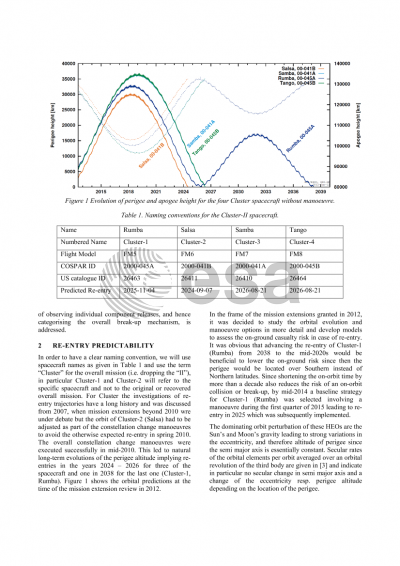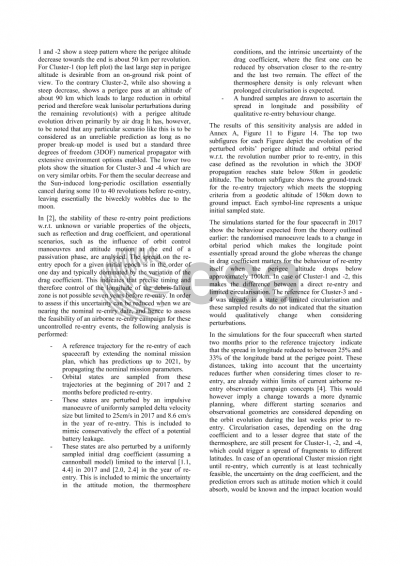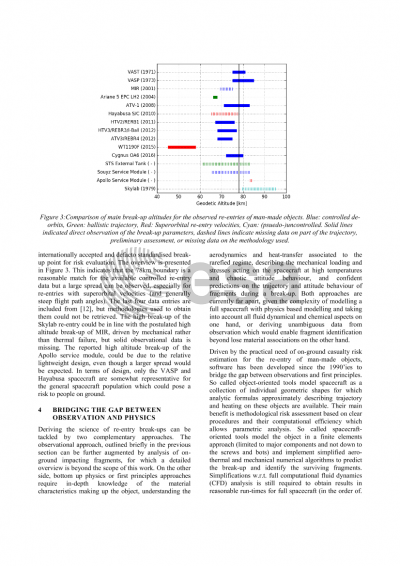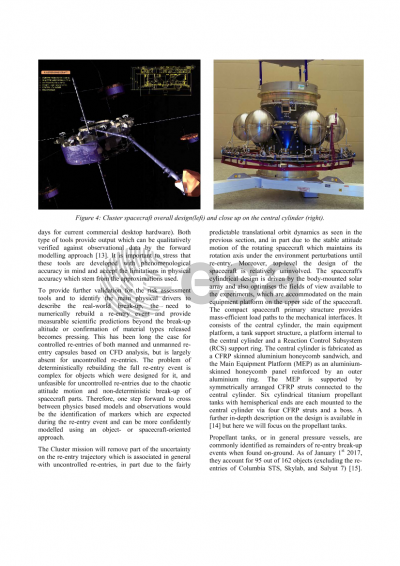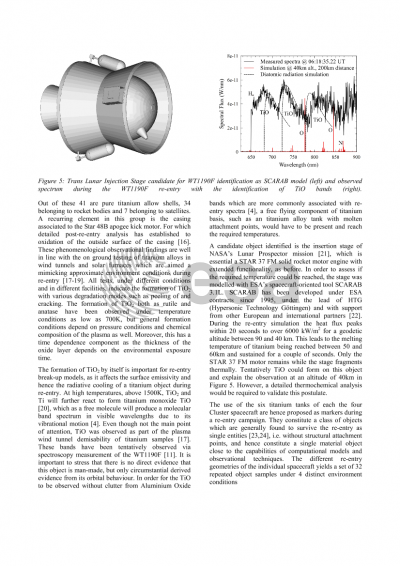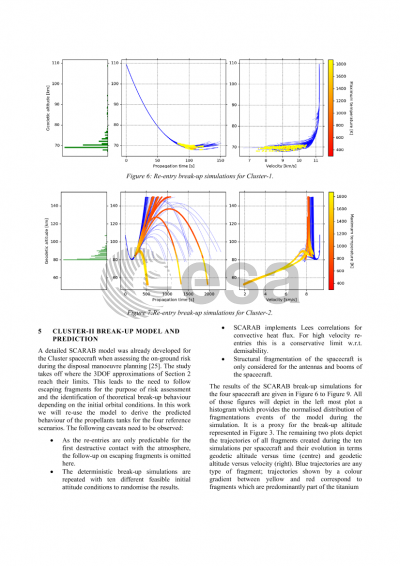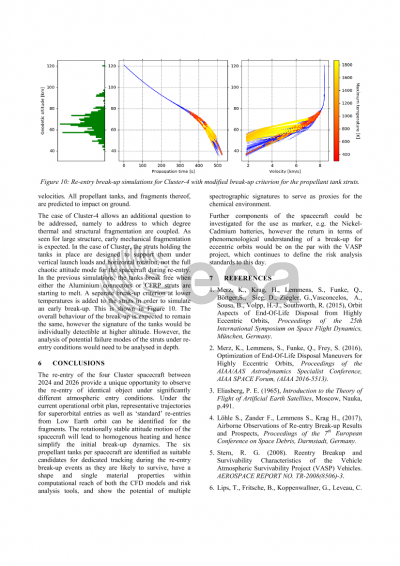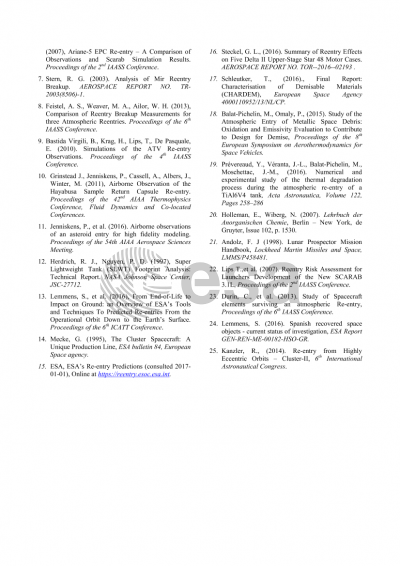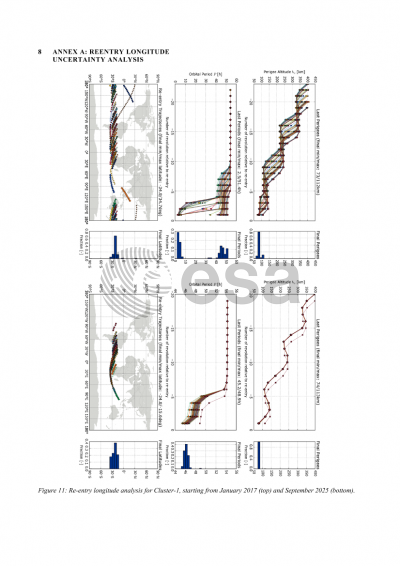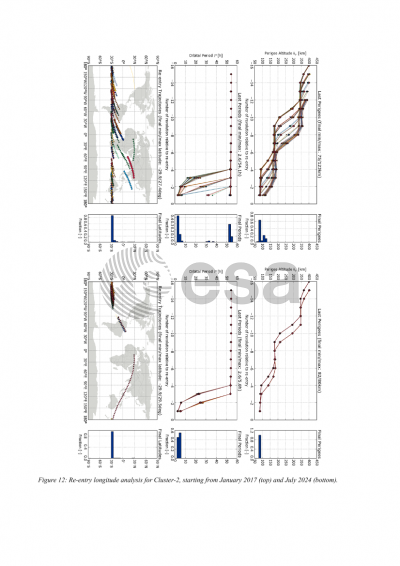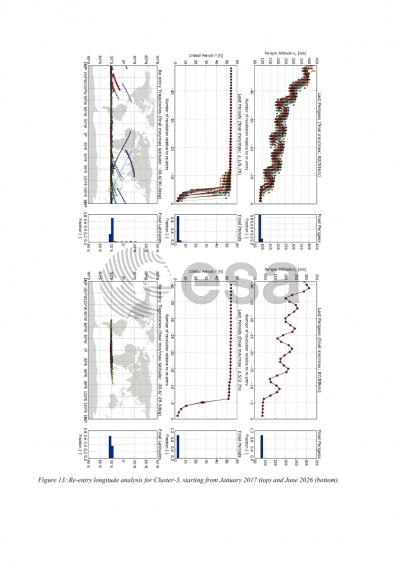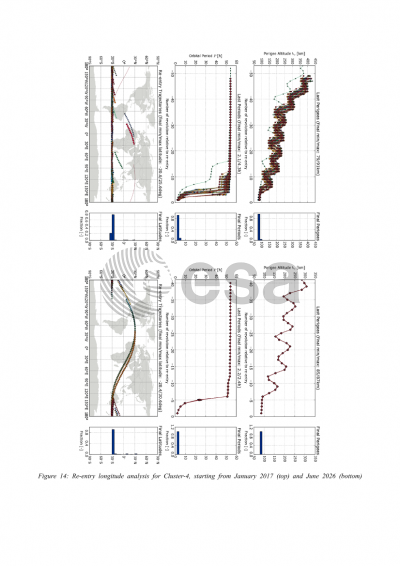Document details

Abstract
The European Space Agency’s (ESA) Cluster II spacecraft are part of an international collaboration to investigate the physical connection between the Sun and Earth. Flying in a tetrahedral formation, the four spacecraft collect detailed data on small-scale changes in near-Earth space and the interaction between the charged particles of the solar wind and Earth's atmosphere. In order to explore the magnetosphere Cluster II orbits on a highly eccentric orbit, initially near-polar with orbital period of 57 hours at a perigee altitude of 19 000 km and apogee altitude of 119 000 km. The four spacecraft have a cylindrical shape completed by four long flagpole antennas. The diameter of the spacecraft is 2.9 m with a height of 1.3 m. The mass amounts to 1200 kg of which 650 kg are propellants, which are expected to be depleted by the end of the mission. After in-depth mission analysis, manoeuvres executed during 2015 will ensure a re-entry of all four spacecraft between 2024 and 2016. The re-entry epoch can already now be predicted with a high temporal accuracy, of a few days, due to the third body perturbations driving the re-entry, which is in stark contrast to re-entries driven by atmospheric perturbations where a ±20% on the remaining orbital lifetime is considered the standard accuracy. This effectively limits the final re-entry of all four spacecraft to Southern latitudes, minimising the risk for people on ground.
During the past decades space agencies, and more recent space industry and academia as well, have developed software models to evaluate the break-up and demise of spacecraft during re-entries. Due to very limited observational data for validation of these models and the operational needs of the agencies, these models are focussed on re-entries from nearly circular orbits or controlled re-entries. This in turn implies that their usability for atmospheric re-entry from highly eccentric orbit is based on extrapolation, in some cases ignoring the physical differences. This work reviews the limited available observational data on uncontrolled spacecraft re-entries with high flight path angle. It describes the simulated break-up of the Cluster-II spacecraft during re-entry and the associated uncertainties which heavily depend on the exact re-entry conditions. Due to the relatively simple design of the spacecraft, the possibility of observing individual component releases, and hence categorising the overall break-up mechanism, is addressed. Given the rare opportunity of a repeatable, predictable, yet uncontrolled re-event, the definition of multiple in-situ observation campaigns and expected science return in terms of break-up model and risk validation algorithms are explored.
Preview
